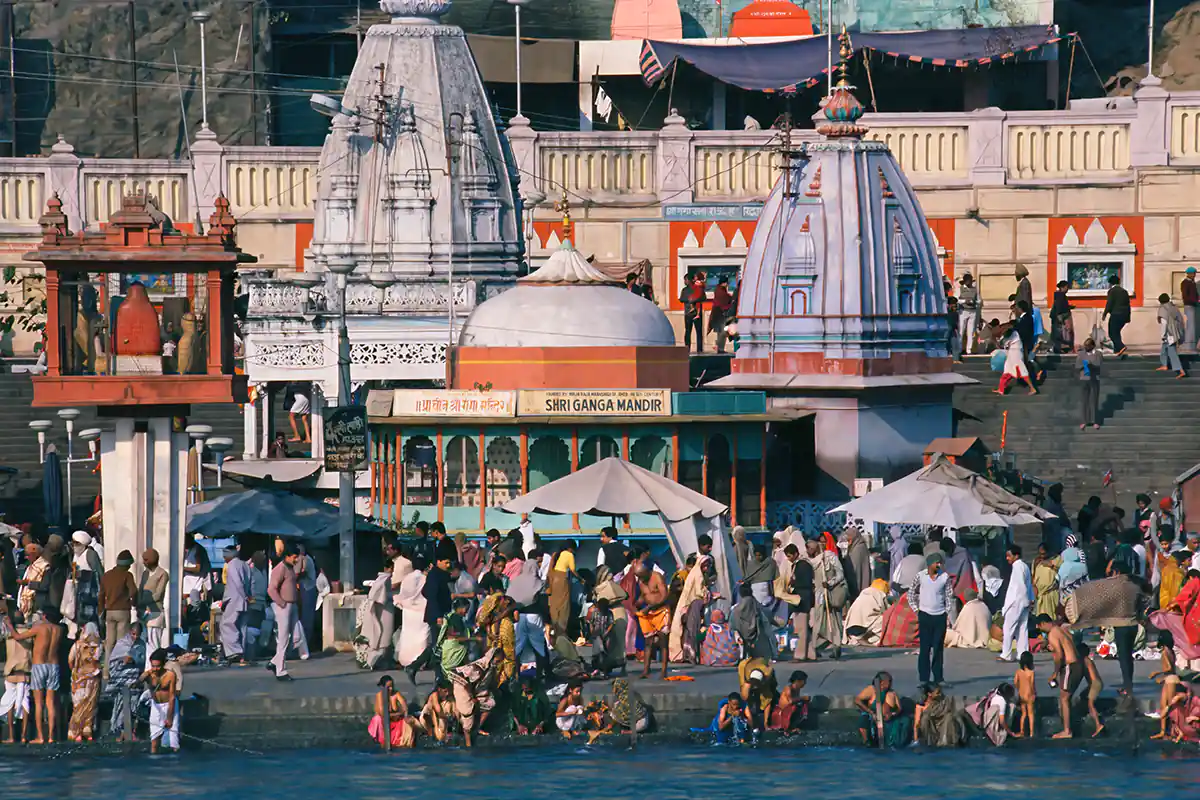Haridwar
Hardwar, or Haridwar, is one of India's holiest places for Hindus. Significantly, pilgrims often go from Haridwar to the two great Himalayan shrines of Kedarnath and Badrinath, as Har means Shiva (the deity of Kedarnath), Hari means Vishnu (the deity of Badrinath), and Dwar means gate. Hardwar is, therefore, the gateway to the two holy shrines of Shiva and Vishnu. The town has also been called Gangadvar, meaning 'Door of the Ganga' because, at this place, the sacred river Ganges leaves the mountains to flow out upon the Indian plains. Many years ago, it was also called Kapilsthan after the great sage Kapil, who lived and meditated there. Today, Hardwar is the home of many Ashrams (hermitages and places for meditation) and Dharamshalas (rest houses for pilgrims), which various swamis, yogis, and religious institutions have established. Throughout the year, many pilgrims come to bathe in the Ganges, especially at the Hari-ka-charan ghat (also called Hari-ki-Pauri), where a footprint of Vishnu is worshipped. Pilgrims also consider it important to visit the beautiful Shiva temple of Daksheswar.
A large pilgrimage festival is held each year in April at the beginning of the Hindu solar year. The great festival of Kumbha Mela is held every twelve years, and an Ardh Kumbha, or half Kumbha, every six years. Millions of pilgrims from India throng to Hardwar during these important festivals. Hardwar is also one of India's Moksapuris, or Seven Sacred Cities, where moksha (spiritual liberation) may be more easily attained. Twenty-four kilometers north of Hardwar is another holy town named Rishikesh, meaning 'abode of the mystic sages.' These two places, Hardwar and Rishikesh, have place names that indicate their spiritual rather than secular attributes. Nowadays, both towns are bustling social centers; in ancient times, however, they were quiet forest groves nestled along rushing mountain rivers - the perfect place for contemplation and a life in harmony with the way of nature. While not speaking directly of Hardwar or Rishikesh, the following passage from the Anusasana Parva Mahabharata (a classic text of Hinduism) well expresses their magical atmosphere:
Certain areas on earth are more sacred than others, some on account of their situation, others because of their sparkling waters, and others because of the association or habitation of saintly people.
For additional information:

Martin Gray is a cultural anthropologist, writer and photographer specializing in the study of pilgrimage traditions and sacred sites around the world. During a 40 year period he has visited more than 2000 pilgrimage places in 160 countries. The World Pilgrimage Guide at sacredsites.com is the most comprehensive source of information on this subject.

